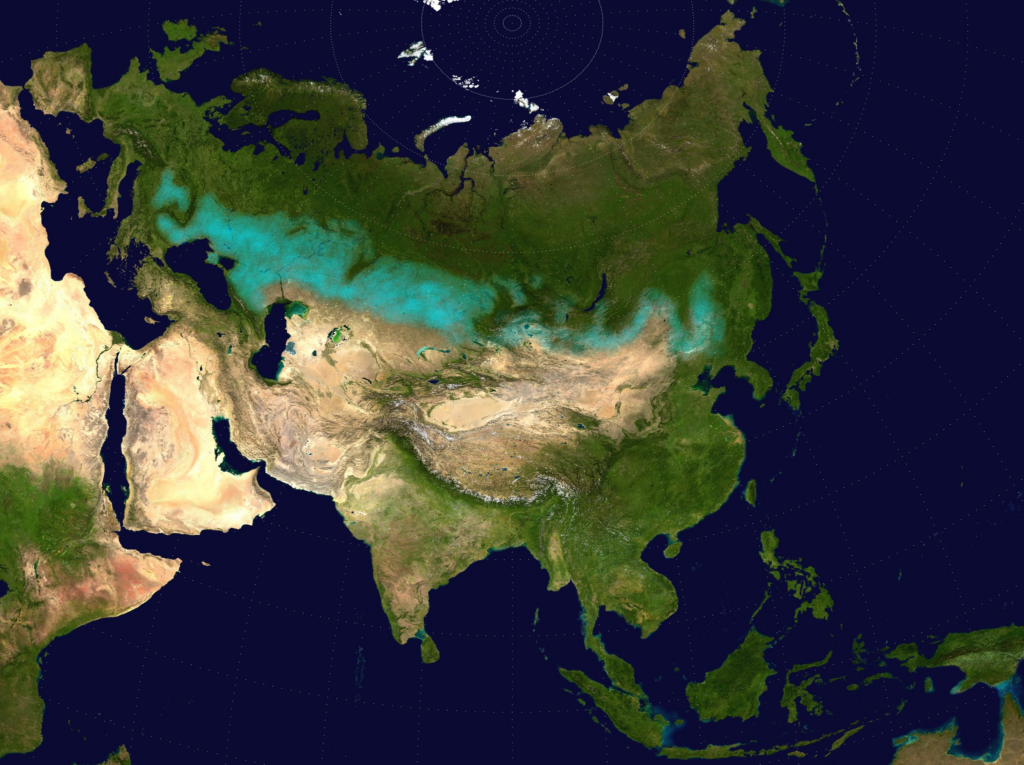Europe is a somewhat contorted triangle at the Western extreme of Eurasia.
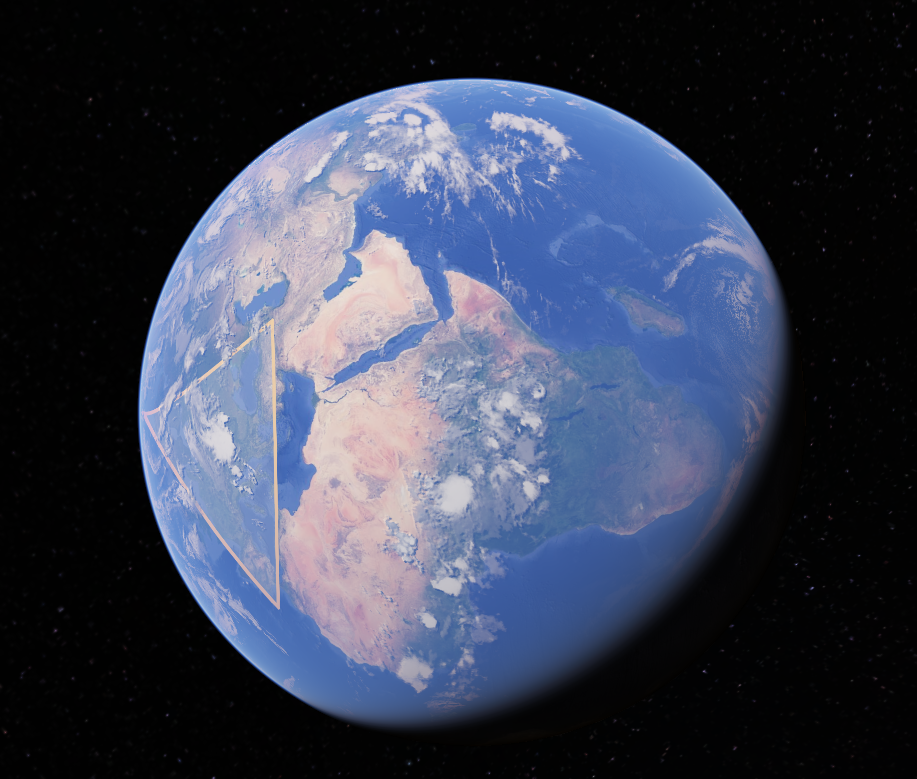
Like most other regions, Europe is habitually presented with north pointing up. Which is fine, that is a standard and standards help us take in geographical data without having to reorient ourselves. This the familiar, to us Europeans at least, standard representation™ of Europe (I’ve used Google Earth for all these projections).
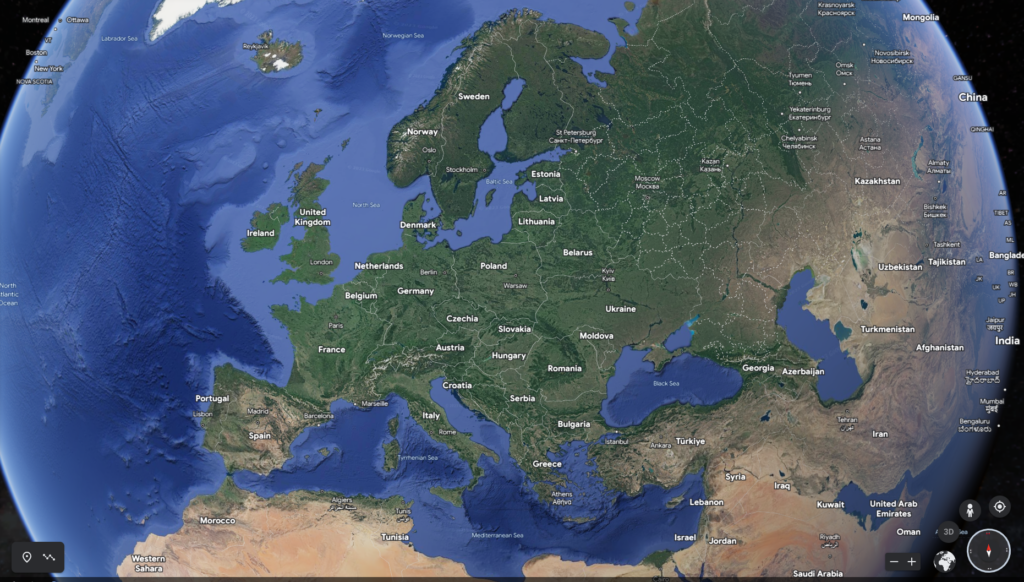
However, going back to Europe being a triangle, more or less, to get different European perspectives we should go to the three sides of that triangle. Beginning with
Atlantic Europe
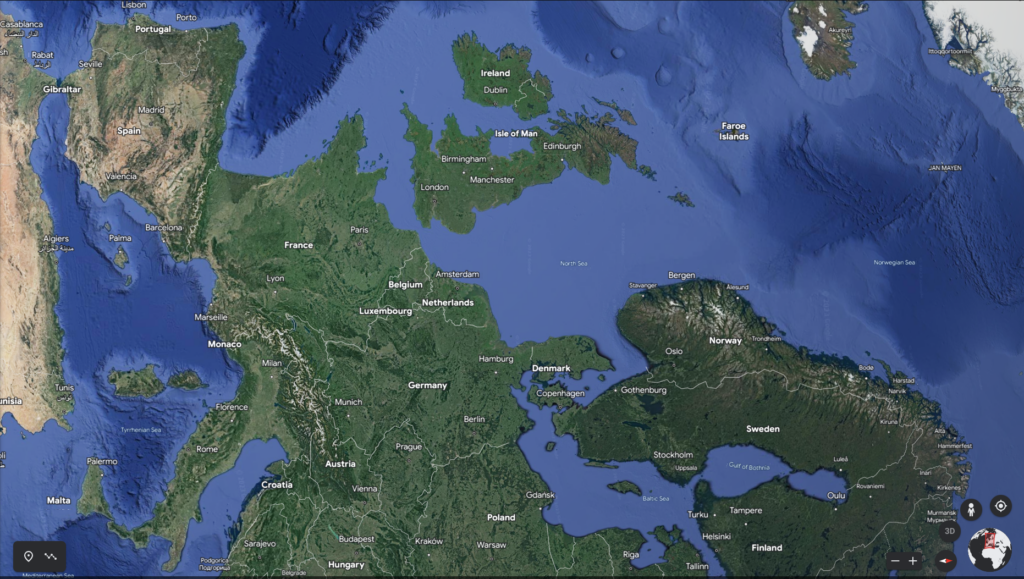
This is the dominant side, more people live to the west and they are overall richer. Viz the Blue Banana.
Also the Atlantic side is to a large extent Trans-Atlantic. What happens on the American continent, particularly North America, matters most.
Mare Nostrum
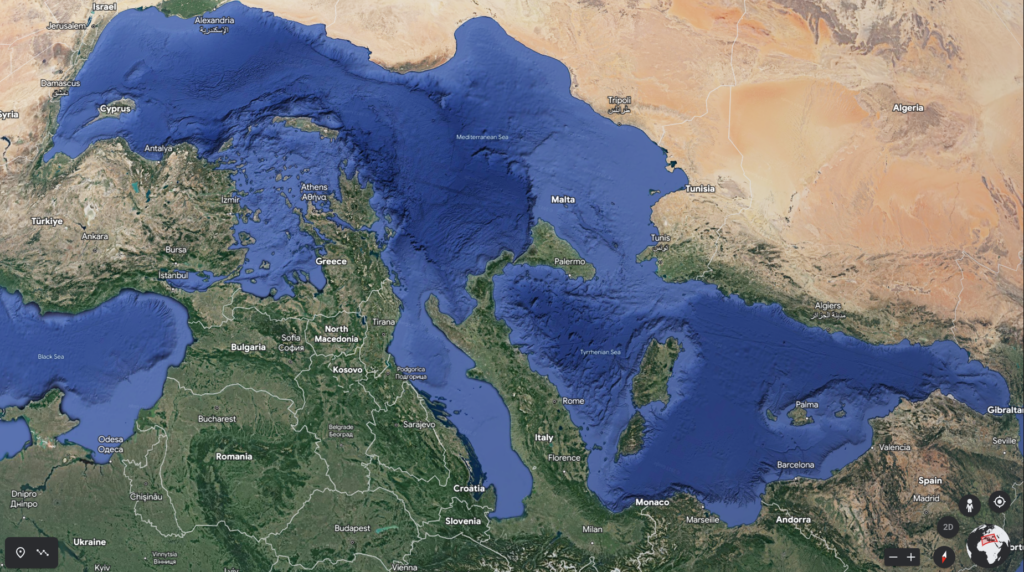
This has historically been the important side. While there were hunter-gatherers in Paleolithic Europe, farmers arrived from Anatolia to the left in this map and populated Europe through waterways. Later on Phoenicians, Greeks and eventually Romans fought over this sea. Rome beat Carthage in North Africa, and called the Middle Sea for Mare Nostrum, Our Sea.
This is our interface to Africa and West Asia (also known as MENA, or when Europe is included as EMEA).
Eurasian Steppes

While the other two boundaries are by sea. this one is by land, and has been the main route of immigration and invasions till today. The Great Steppe has worked as an Eurasian conveyor belt, where the grass were literally greener on the western side.
North Asia is less populated than the Eurasian hotspots of Europe, South Asia and East Asia, but the boundary is more diffuse than the coastlines of the other two sides, the boundary with rest of Eurasia is one of convention. Europe is walled off from West Asia by the Caucasus mountains, but not to the extent that East Asia is walled off by the Tian Shan and Taklamakan or South Asia is by the Himalayas and Hindu Kush.
The three European perspectives
European perspectives are shaped by geography as much as history and economy, which edge they belong to (or edges near the corners). Roughly speaking the American, African and Asian sides have their respective significant others, and with that their respective perspectives.

